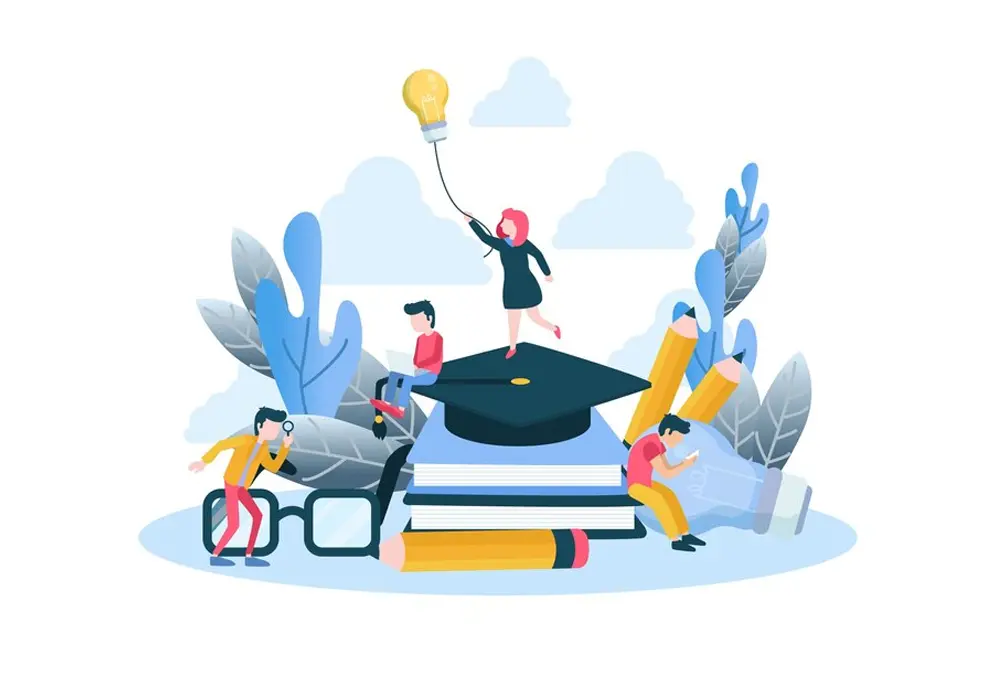Overcoming Digital Education Challenges

As the modern world goes digital, education and schools systems are also moving towards using more technology. This platform beginning by the government of India to make school better education and management through digital tools. Technology has many benefits in education, it also comes with many challenges. In this article you will know these challenges and suggest ways to tackle them effectively.
Limited Access to Computers and Internet
Digital education is a big problem is that not everyone has access to smartphones, computers, or a stable internet connection. Especially for students and teachers in rural or low-income areas. Without these tools, it’s difficult for them to use online learning platforms.
Solution
The solution of this issue, companies and governments can work together to provide affordable devices and internet access. creating computer labs in schools can help make sure everyone has what they need to participate in digital learning, giving out low-cost tablets, Setting up free Wi-Fi spots in public areas.
Learning How to Use Technology
Digital devices and online platforms not everyone knows how to use. Both students and teachers need to learn how to use computers, access the internet, and find online educational resources.
Solution:
Schools should offer regular training sessions to help teachers and students learn digital skills. Online classes, workshops, and practical sessions can make everyone more comfortable with technology. These training programs should be part of the school’s routine to that make sure digital literacy is a continuous process.
People Are Reluctant to Change
Many teachers and school administrators are used to traditional teaching methods. They might worried and feel uncomfortable about using new technologies, which can slow down the adoption of digital tools in education.
Solution
Digital education important to show the benefits to ease these worries. Schools can share success stories, involve teachers in planning , offer hands-on training, how to use new tools. Providing concerns support and Listening to their will make them more open to using technology.
Keeping Data Safe
Digital platforms store and collect personal information about teachers and students. A major concern Keeping this information safe from unauthorized access and hackers.
Solution
To protect data schools should use strong security measures. This includes using strong passwords, encryption, and regularly updating software. Students and teachers training about online safety practices can also help. Following data protection laws will build trust and make sure information is handled properly.
Ensuring Quality Learning Materials
For digital education to work well, the online materials must be of good quality. Boring or outdated content can lead to students losing interest and not learning effectively.
Solution
Schools should work with experts to create engaging and interactive online learning materials. Using videos, animations, and quizzes can make lessons more interesting. Regularly updating content ensures that it stays relevant and effective.
Supporting Teachers with Training
In digital education teachers are essential to the success, but many may feel uncomfortable by new technology. They need training and support to effectively use digital tools in their teaching.
Solution
Professional development and continuous training should be available for teachers. Schools can provide workshops, online courses, and mentoring to help teachers how to use digital tools. Having technical support available will also help teachers feel more confident.
Keeping Students Engaged Online
It can be challenging to keep students interested and motivated in a digital learning environment. Without face-to-face interaction, students may get distracted easily and lose focus.
Solution
Teachers can use fun and interactive methods to keep students engaged. Online games, quizzes, and group projects can make learning more enjoyable. Encouraging discussions and teamwork online can also help students feel more connected.
Making Sure Technology Works Well
Successful digital education depends on having up-to-date devices and good internet connections. If technology doesn’t work fair, it can Interrupt learning.
Solution
Schools should invest in good internet and modern equipment. Regular conservation and technical support can help prevent issues.. Having IT professionals on hand to fix trouble rapidly will keep things running smoothly.
Equal Access for All Students
Digital resources have not the same access to all students. Some may not have internet or devices access at home, leading to unequal learning opportunities.
Solution
Governments and schools should work to make sure all students have access to digital tools. This could include loaning out devices, providing internet access at a low cost for low-income families, and creating community centers with internet and computers. Teachers should be aware of these challenges and offer additional assistance where needed.
Managing Screen Time
Too much using time of screen can cause health problems like reduced physical activity and eye strain. It’s necessary to find a balance between online learning and other activities.
Solution
Both online and offline activities should include in their educators lessons. Encouraging students to take breaks, do physical exercise, and spend time outdoors can help reduce the negative effects of excessive screen time. Parents can also help by monitoring their children’s screen use and promoting healthy habits.
Conclusion
Digital education offers many benefits, it also need to be addressed because its comes with many challenges. By improving access to technology, teaching digital skills, ensuring data security, creating engaging content, supporting teachers, and schools can make digital education successful. Learning from initiatives like Shaladarpan, we can build a future where technology strengthens learning and makes education more accessible for everyone.







